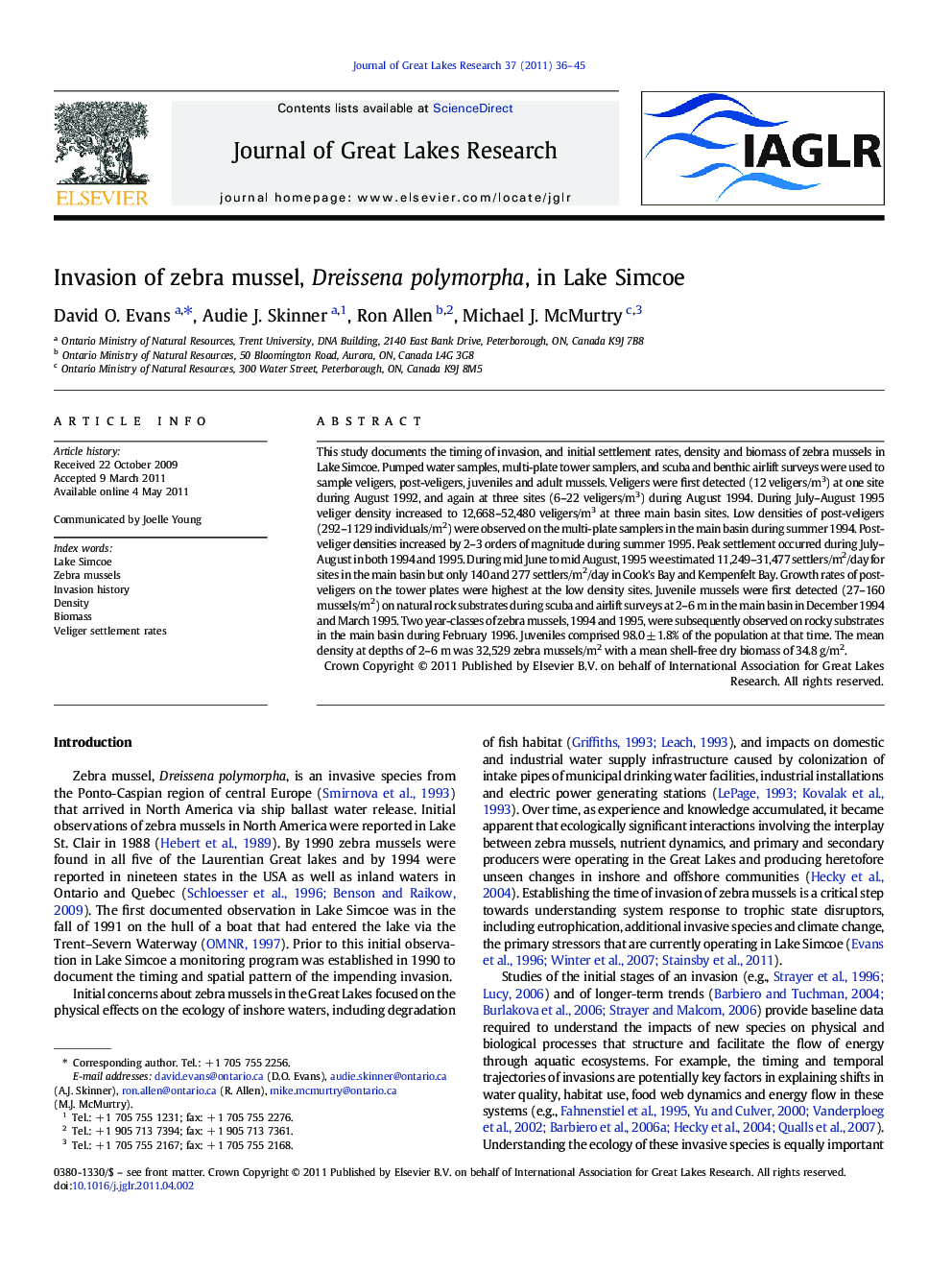| Article ID | Journal | Published Year | Pages | File Type |
|---|---|---|---|---|
| 4398946 | Journal of Great Lakes Research | 2011 | 10 Pages |
This study documents the timing of invasion, and initial settlement rates, density and biomass of zebra mussels in Lake Simcoe. Pumped water samples, multi-plate tower samplers, and scuba and benthic airlift surveys were used to sample veligers, post-veligers, juveniles and adult mussels. Veligers were first detected (12 veligers/m3) at one site during August 1992, and again at three sites (6–22 veligers/m3) during August 1994. During July–August 1995 veliger density increased to 12,668–52,480 veligers/m3 at three main basin sites. Low densities of post-veligers (292–1129 individuals/m2) were observed on the multi-plate samplers in the main basin during summer 1994. Post-veliger densities increased by 2–3 orders of magnitude during summer 1995. Peak settlement occurred during July–August in both 1994 and 1995. During mid June to mid August, 1995 we estimated 11,249–31,477 settlers/m2/day for sites in the main basin but only 140 and 277 settlers/m2/day in Cook's Bay and Kempenfelt Bay. Growth rates of post-veligers on the tower plates were highest at the low density sites. Juvenile mussels were first detected (27–160 mussels/m2) on natural rock substrates during scuba and airlift surveys at 2–6 m in the main basin in December 1994 and March 1995. Two year-classes of zebra mussels, 1994 and 1995, were subsequently observed on rocky substrates in the main basin during February 1996. Juveniles comprised 98.0 ± 1.8% of the population at that time. The mean density at depths of 2–6 m was 32,529 zebra mussels/m2 with a mean shell-free dry biomass of 34.8 g/m2.
